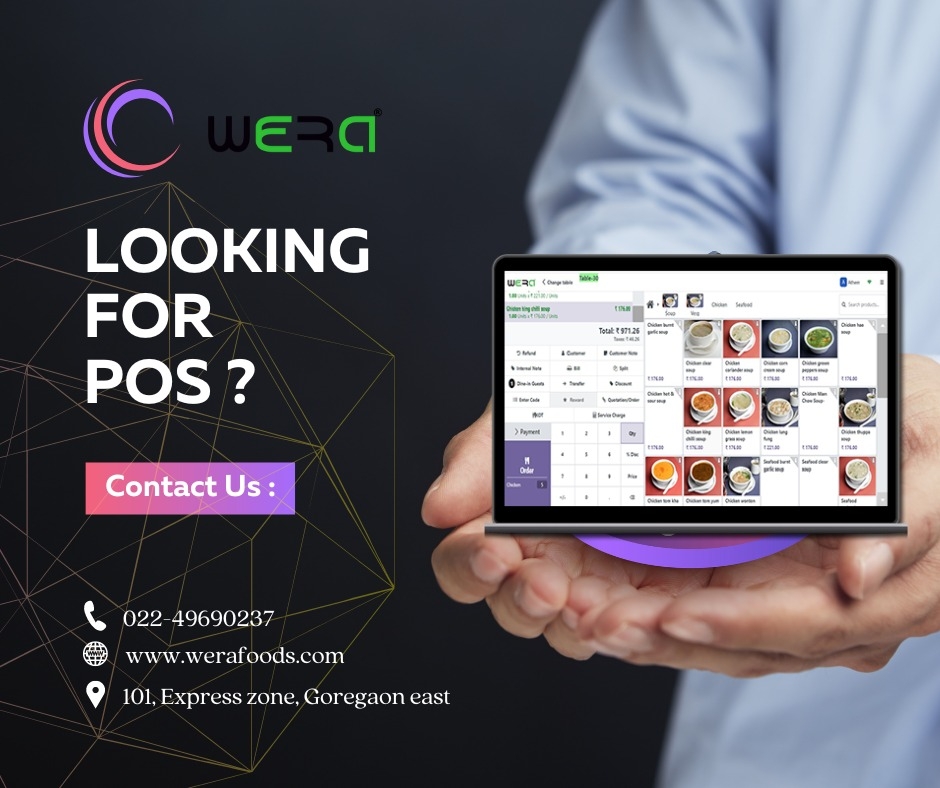Son Güncellemeler
Kategoriler
Kategoriler
Afghanistan
Albania
Algeria
American Samoa
Andorra
Angola
Anguilla
Antarctica
Antigua and Barbuda
Argentina
Armenia
Aruba
Australia
Austria
Azerbaijan
Bahamas
Bahrain
Bangladesh
Barbados
Belarus
Belgium
Belize
Benin
Bermuda
Bhutan
Bolivia
Bosnia and Herzegovina
Botswana
Bouvet Island
Brazil
British Indian Ocean Territory
Brunei Darussalam
Bulgaria
Burkina Faso
Burundi
Cambodia
Cameroon
Canada
Cape Verde
Cayman Islands
Central African Republic
Chad
Chile
China
Christmas Island
Cocos (Keeling) Islands
Colombia
Comoros
Congo
Cook Islands
Costa Rica
Croatia (Hrvatska)
Cuba
Cyprus
Czech Republic
Denmark
Djibouti
Dominica
Dominican Republic
East Timor
Ecuador
Egypt
El Salvador
Equatorial Guinea
Eritrea
Estonia
Ethiopia
Falkland Islands (Malvinas)
Faroe Islands
Fiji
Finland
France
France, Metropolitan
French Guiana
French Polynesia
French Southern Territories
Gabon
Gambia
Georgia
Germany
Ghana
Gibraltar
Guernsey
Greece
Greenland
Grenada
Guadeloupe
Guam
Guatemala
Guinea
Guinea-Bissau
Guyana
Haiti
Heard and Mc Donald Islands
Honduras
Hong Kong
Hungary
Iceland
India
Isle of Man
Indonesia
Iran (Islamic Republic of)
Iraq
Ireland
Israel
Italy
Ivory Coast
Jersey
Jamaica
Japan
Jordan
Kazakhstan
Kenya
Kiribati
Korea, Democratic People's Republic of
Korea, Republic of
Kosovo
Kuwait
Kyrgyzstan
Lao People's Democratic Republic
Latvia
Lebanon
Lesotho
Liberia
Libyan Arab Jamahiriya
Liechtenstein
Lithuania
Luxembourg
Macau
Macedonia
Madagascar
Malawi
Malaysia
Maldives
Mali
Malta
Marshall Islands
Martinique
Mauritania
Mauritius
Mayotte
Mexico
Micronesia, Federated States of
Moldova, Republic of
Monaco
Mongolia
Montenegro
Montserrat
Morocco
Mozambique
Myanmar
Namibia
Nauru
Nepal
Netherlands
Netherlands Antilles
New Caledonia
New Zealand
Nicaragua
Niger
Nigeria
Niue
Norfolk Island
Northern Mariana Islands
Norway
Oman
Pakistan
Palau
Palestine
Panama
Papua New Guinea
Paraguay
Peru
Philippines
Pitcairn
Poland
Portugal
Puerto Rico
Qatar
Reunion
Romania
Russian Federation
Rwanda
Saint Kitts and Nevis
Saint Lucia
Saint Vincent and the Grenadines
Samoa
San Marino
Sao Tome and Principe
Saudi Arabia
Senegal
Serbia
Seychelles
Sierra Leone
Singapore
Slovakia
Slovenia
Solomon Islands
Somalia
South Africa
South Georgia South Sandwich Islands
Spain
Sri Lanka
St. Helena
St. Pierre and Miquelon
Sudan
Suriname
Svalbard and Jan Mayen Islands
Swaziland
Sweden
Switzerland
Syrian Arab Republic
Taiwan
Tajikistan
Tanzania, United Republic of
Thailand
Togo
Tokelau
Tonga
Trinidad and Tobago
Tunisia
Turkey
Turkmenistan
Turks and Caicos Islands
Tuvalu
Uganda
Ukraine
United Arab Emirates
United Kingdom
United States
United States minor outlying islands
Uruguay
Uzbekistan
Vanuatu
Vatican City State
Venezuela
Vietnam
Virgin Islands (British)
Virgin Islands (U.S.)
Wallis and Futuna Islands
Western Sahara
Yemen
Zaire
Zambia
Zimbabwe
- STOLEN VEHICLE – PLEASE SHARE
If anyone sees my car, please contact myself or the police. The police have been informed and the number plate is visible for reference.
Taken: Chesterfield area around midnight
Last tracked: Weston, Spalding area (phone also stolen and now offline)
Vehicle: Dacia Jogger
Reg: YS75 BUU
Any information is greatly appreciated. Thank you for your time.
#StolenCar #Chesterfield #Spalding #Weston #Lincolnshire #Derbyshire #UK #Police #Dacia #DaciaJogger #YS75BUU #PleaseShare🚨 STOLEN VEHICLE – PLEASE SHARE 🚨 If anyone sees my car, please contact myself or the police. The police have been informed and the number plate is visible for reference. 📍 Taken: Chesterfield area around midnight 📍 Last tracked: Weston, Spalding area (phone also stolen and now offline) 🚗 Vehicle: Dacia Jogger 🔢 Reg: YS75 BUU Any information is greatly appreciated. Thank you for your time. #StolenCar #Chesterfield #Spalding #Weston #Lincolnshire #Derbyshire #UK #Police #Dacia #DaciaJogger #YS75BUU #PleaseShare0 Yorumlar 0 hisse senetleri 526 ViewsPlease log in to like, share and comment! - Spy Watch Camera | EUSpyShop
Browse powerful spy watch cameras at EUSpyShop for covert surveillance and compact design. Ideal for discreet video recording on the go.Spy Watch Camera | EUSpyShop Browse powerful spy watch cameras at EUSpyShop for covert surveillance and compact design. Ideal for discreet video recording on the go.0 Yorumlar 0 hisse senetleri 724 Views - Clear Aligners Dublin - Merrion Square Dental | Dentist Dublin
Experience the transformative journey to a healthy and captivating smile with our clear aligners Dublin treatment at Merrion Square Dental.
Visit Us - https://merrionsquaredental.ie/services/clear-aligners-dublinClear Aligners Dublin - Merrion Square Dental | Dentist Dublin Experience the transformative journey to a healthy and captivating smile with our clear aligners Dublin treatment at Merrion Square Dental. Visit Us - https://merrionsquaredental.ie/services/clear-aligners-dublinMERRIONSQUAREDENTAL.IEClear Aligners Dublin - Merrion Square Dental | Dentist DublinExperience the transformative journey to a healthy and captivating smile with our clear aligners Dublin treatment at Merrion Square Dental.0 Yorumlar 0 hisse senetleri 978 Views - General Dentistry Dublin - Merrion Square Dental | Dentist Dublin
Welcome to Merrion Square Dental, your trusted source for comprehensive General Dentistry Dublin, Ireland.
Visit Us - https://merrionsquaredental.ie/services/general-dentistry-dublinGeneral Dentistry Dublin - Merrion Square Dental | Dentist Dublin Welcome to Merrion Square Dental, your trusted source for comprehensive General Dentistry Dublin, Ireland. Visit Us - https://merrionsquaredental.ie/services/general-dentistry-dublin0 Yorumlar 0 hisse senetleri 965 Views - restaurant pos software indiaOtherWera Foods POS stands out as one of the most reliable and forward-thinking choices for modern restaurants. Here’s why:
1. All-in-One Smart Restaurant Operating System
Wera isn’t just a billing tool—it’s a complete platform that manages dine-in, takeaway, delivery, inventory, CRM, and online orders from one dashboard. This reduces complexity and boosts efficiency.
2. Advanced Inventory and Cost Control
Wera’s real-time stock tracking, automated purchase orders, low-stock alerts, and recipe-level costing help restaurants significantly reduce waste. Its analytics allow owners to instantly spot leakages and take corrective action.
3. Seamless Online Order Integration
Wera integrates directly with Swiggy, Zomato, website orders, QR menu, and more. This ensures you never miss an order and can manage all channels effortlessly—leading to higher sales without extra workload.
4. Powerful Analytics to Boost Revenue
From menu performance to staff productivity to hour-wise sales patterns, Wera provides deep insights that help restaurant owners make profitable decisions. It simplifies menu engineering and helps identify top-earning items.
5. Easy to Use, Fast to Train, and Highly Reliable
Designed for real-world restaurant environments, Wera POS offers a clean interface, quick learning curve, and fast order processing. This reduces staff errors and improves customer service.
6. Built for Scalability
Whether you run a small café or a multi-outlet chain, Wera Foods POS adapts to your needs. Cloud sync, central menu control, and multi-location reporting make expansion smooth and manageable.
7. Exceptional Support and Continuous Innovation
Wera provides prompt support, regular feature upgrades, and a strong focus on solving real restaurant challenges. This ensures owners always have a system that grows with the business.
Wera Foods POS stands out as one of the most reliable and forward-thinking choices for modern restaurants. Here’s why: 1. All-in-One Smart Restaurant Operating System Wera isn’t just a billing tool—it’s a complete platform that manages dine-in, takeaway, delivery, inventory, CRM, and online orders from one dashboard. This reduces complexity and boosts efficiency. 2. Advanced Inventory and Cost Control Wera’s real-time stock tracking, automated purchase orders, low-stock alerts, and recipe-level costing help restaurants significantly reduce waste. Its analytics allow owners to instantly spot leakages and take corrective action. 3. Seamless Online Order Integration Wera integrates directly with Swiggy, Zomato, website orders, QR menu, and more. This ensures you never miss an order and can manage all channels effortlessly—leading to higher sales without extra workload. 4. Powerful Analytics to Boost Revenue From menu performance to staff productivity to hour-wise sales patterns, Wera provides deep insights that help restaurant owners make profitable decisions. It simplifies menu engineering and helps identify top-earning items. 5. Easy to Use, Fast to Train, and Highly Reliable Designed for real-world restaurant environments, Wera POS offers a clean interface, quick learning curve, and fast order processing. This reduces staff errors and improves customer service. 6. Built for Scalability Whether you run a small café or a multi-outlet chain, Wera Foods POS adapts to your needs. Cloud sync, central menu control, and multi-location reporting make expansion smooth and manageable. 7. Exceptional Support and Continuous Innovation Wera provides prompt support, regular feature upgrades, and a strong focus on solving real restaurant challenges. This ensures owners always have a system that grows with the business.TürYeniPrice£5000 (GBP)StatusIn stock0 Yorumlar 0 hisse senetleri 1428 Views - Why Do Restaurants Need A POS System?
Running a restaurant is fast-paced and hectic. That's exactly why having a good POS system is so important. It's not just a fancy cash register. A restaurant POS software helps you keep everything organized. It takes orders, processes payments, tracks inventory, and schedules staff. It also keeps an eye on your sales all in one place.
For starters, it makes service faster and more accurate. When a server takes an order, it goes straight to the kitchen or bar without any confusion or delay. That means fewer mistakes, happier customers, and quicker turnaround at tables.
From the business side, a POS system is a game-changer. It tells you what’s selling and what’s not, warns you when ingredients are running low, and helps you track how your staff is performing. visit at https://www.werafoods.com/
Why Do Restaurants Need A POS System? Running a restaurant is fast-paced and hectic. That's exactly why having a good POS system is so important. It's not just a fancy cash register. A restaurant POS software helps you keep everything organized. It takes orders, processes payments, tracks inventory, and schedules staff. It also keeps an eye on your sales all in one place. For starters, it makes service faster and more accurate. When a server takes an order, it goes straight to the kitchen or bar without any confusion or delay. That means fewer mistakes, happier customers, and quicker turnaround at tables. From the business side, a POS system is a game-changer. It tells you what’s selling and what’s not, warns you when ingredients are running low, and helps you track how your staff is performing. visit at https://www.werafoods.com/0 Yorumlar 0 hisse senetleri 1256 Views - Upgrade Your Space with Stylish Sliding Doors – Ever Clear Living
Discover sleek, durable sliding doors from Ever Clear Living that blend style, functionality, and panoramic views. Perfect for homes, terraces, and commercial spaces, our sliding doors maximize natural light, save space, and enhance your indoor-outdoor living experience. Explore premium designs and effortless gliding solutions today!
Visit Us-https://everclearliving.com/sliding-doors/Upgrade Your Space with Stylish Sliding Doors – Ever Clear Living Discover sleek, durable sliding doors from Ever Clear Living that blend style, functionality, and panoramic views. Perfect for homes, terraces, and commercial spaces, our sliding doors maximize natural light, save space, and enhance your indoor-outdoor living experience. Explore premium designs and effortless gliding solutions today! Visit Us-https://everclearliving.com/sliding-doors/EVERCLEARLIVING.COMPanoramic Sliding Doors Costa Blanca, Costa del Sol - EverClear Living SpainDiscover panoramic sliding doors in Costa Blanca & Costa del Sol. Sleek, modern designs by EverClearLiving to open up your home with style and light.0 Yorumlar 0 hisse senetleri 1801 Views - 0 Yorumlar 0 hisse senetleri 1301 Views
- Stylish & Durable Decking Solutions – Ever Clear Living
Upgrade your outdoor space with premium decking from Ever Clear Living. Our durable, low-maintenance decking enhances terraces, gardens, and balconies with elegance and comfort. Designed to withstand weather and daily use, it’s perfect for relaxing, entertaining, or creating your dream outdoor retreat. Discover decking that combines style, strength, and effortless upkeep today!
Stylish & Durable Decking Solutions – Ever Clear Living Upgrade your outdoor space with premium decking from Ever Clear Living. Our durable, low-maintenance decking enhances terraces, gardens, and balconies with elegance and comfort. Designed to withstand weather and daily use, it’s perfect for relaxing, entertaining, or creating your dream outdoor retreat. Discover decking that combines style, strength, and effortless upkeep today!EVERCLEARLIVING.COMComposite Decking Spain - High Quality Decking Material - EverClearLivingDiscover high-quality composite decking in Spain. Weather-resistant, modern, and built to last. Choose EverClearLiving for expert installation.0 Yorumlar 0 hisse senetleri 1756 Views - 0 Yorumlar 0 hisse senetleri 1297 Views
Daha Hikayeler
Trending
Sponsorluk

Hammity.app – Build, Connect, and Grow Your Community
Hammity.app is a next-generation communication and community platform built by Hamster Systems, designed to bring people, teams, and organizations together in one connected space. With a...
© 2025 Hamster Network  Turkish
Turkish








